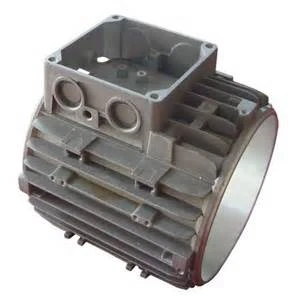Mobile:+86-311-808-126-83
Email:info@ydcastings.com
Understanding the Functionality and Design of Slurry Pump Impellers for Optimal Performance
Understanding Slurry Pump Impellers Design and Functionality
Slurry pumps are essential components in industries such as mining, construction, and wastewater management, where the transport of slurry—mixtures of solids and liquids—is a frequent requirement. A vital part of these pumps is the impeller, which plays a crucial role in ensuring efficient and effective fluid flow. This article delves into the design, function, and types of slurry pump impellers, illustrating their importance in slurry pumping applications.
What is a Slurry Pump Impeller?
An impeller is a rotating component within a pump that transfers energy from the motor to the fluid, causing it to move. In the context of slurry pumps, the impeller is specifically designed to handle thick, abrasive slurries that contain solid particles. The design and material of the impeller significantly influence the pump's overall performance, efficiency, and lifespan.
Design Considerations
The design of a slurry pump impeller must accommodate the unique challenges posed by slurries. First and foremost, the impeller needs to exhibit high resistance to wear and corrosion, as the abrasive particles in the slurry can quickly erode weaker materials. Common materials used for slurry pump impellers include high-chrome iron and rubber linings that provide durability against these harsh conditions.
Secondly, the impeller's shape and the curvature of its blades are crucial for achieving the right flow rate and pressure. Impellers often come in various designs, including closed, semi-open, and open configurations. Closed impellers, with their enclosed blades, are effective for high-pressure applications, while open impellers are better suited for handling larger solids but may operate at lower efficiencies.
slurry pump impeller

Types of Impellers
There are primarily three types of slurry pump impellers
1. Closed Impellers These impellers feature blades that are fully enclosed between two discs. This design is generally favored for its efficiency and its ability to handle fine slurries at high pressures. Closed impellers minimize the risk of solids settling and clogging, making them ideal for applications requiring high flow and pressure.
2. Semi-Open Impellers Semi-open impellers have a partially enclosed design, allowing for some flexibility in handling slurries with larger particles. This design balances efficiency and the ability to pass solid materials, making it versatile for various applications in the mining and construction industries.
3. Open Impellers Open impellers consist of blades without any covering, making them capable of accommodating larger solids in the slurry. However, they usually operate at lower efficiencies compared to closed impellers. Open impellers are preferred for very viscous slurries or when the risk of clogging is present.
Conclusion
In summary, slurry pump impellers are critical components that directly affect the efficiency and effectiveness of slurry handling operations. Their design must consider the abrasive nature of slurries while providing adequate pressure and flow rate. Understanding the different types of impellers available and their specific applications allows industries to choose the most suitable options for their needs. With advancements in materials science and engineering, slurry pump impellers continue to evolve, enhancing performance and reliability in even the most challenging conditions.
-
Why Is Choosing the Right Motor Housing Critical for Engine Performance?NewsJul.18,2025
-
Which Impeller Types Best Optimize Your Pump’s Efficiency?NewsJul.18,2025
-
Optimize Maintenance Efficiency with Durable Oil Catch SolutionsNewsJul.18,2025
-
Maximize Pump Performance with Precision-Engineered ComponentsNewsJul.18,2025
-
Elevate Industrial Flow Systems with Precision-Engineered ComponentsNewsJul.18,2025
-
Boost Durability and Functionality with Precision Power CastingsNewsJul.18,2025











